In the wake of an incredible win by Jason Zhang at The Calling: Singapore, Dash- and in particular, the Hybrid lists that have been evolving among the Dash faithful since Everfest- has been receiving a lot of attention. Here's Jason's 1st place list.
If this is your first foray into the high-tech world of Metrix and you aspire to test-drive this deck, we recommend you start out with our FAB101 article to learn the basics of the class.
What, Exactly, is Hybrid Dash?
A Hybrid deck is the combination of 2 different decks into one. This isn't a new idea, but the application of it to Dash really sparked interest and found success during Everfest. We take the aggressive style that came into being with the Everfest card pool and combine it with the more defensive midrange/control types that dominated Mechanologist strategy before that. This quickly became my favorite Dash archetype, and with 4 months committed to the deck's refinement, I'm here to explain what it's doing.
Why should we play hybrid?
Unlike most decks, a hybrid approach to deckbuilding can, in theory, win against every other deck.
Bold statement, I know, but let me explain a bit further.
Aggro Dash has a bunch of winnable matchups into all the aggro race strategies that are dominant in the current meta, but folds to more grindy opponents like Oldhim. Midrange Dash has a great matchup into fatigue decks, and can out-grind them after establishing a board state of multiple pistol items; but then we can't keep pace with the aggro decks.
So is Hybrid the best of both worlds?
The short answer is yes, but of course it's not that simple. With an entire second deck hiding in the sideboard, it gets a bit crowded. To fit everything we need into just 80 cards, there are some necessary cuts to make, which weaken both strategies a bit; but by making small sacrifices at the outer edges of our two strategies, we essentially gain a decent matchup into every hero.
And yes, I mean every hero. Without exception.
There are no real "auto-wins" for this deck, but neither are there "auto-losses". That means most matchups will be decided not through the luck of pairings, but through player skill.
Sometimes the deck feels a bit like a swiss army knife: you don't need that mini-saw in every matchup, and sometimes you'll wish you had a full-sized saw, but you had to fit the corkscrew too. As your meta develops and evolves- perhaps even in response to you- the deck can be tweaked to be more aggressive, more defensive, more whatever you need; and with a growing card pool, those options will only increase.
What's a Hybrid Deck Look Like?
A hybrid build is made up of 3 components: the deck core, the aggro package, and the defensive package. For the most part, you just shuffle the core deck together with one of the other packages, but depending on your exact list those are not always hard constraints.
My hybrid deck plays a core package of 47 cards, an aggro package with 13 cards, a defensive package with 13 cards, 1 weapon, and 6 equipment pieces.
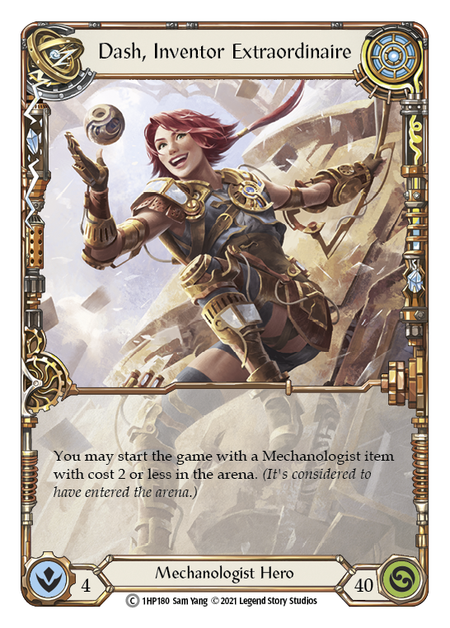
Weapons
Equipment
Loadout
- Combustible Courier (Blue) (3)
- High Octane (Red) (3)
- High Speed Impact (Blue) (3)
- Payload (Red) (3)
- Spark of Genius (Yellow) (3)
- T-Bone (Blue) (3)
- Teklo Core (Blue) (2)
- Throttle (Red) (3)
- Throttle (Yellow) (3)
- Throttle (Blue) (3)
- Zero to Sixty (Red) (3)
- Zero to Sixty (Yellow) (3)
- Zero to Sixty (Blue) (3)
- Zipper Hit (Red) (3)
- Zipper Hit (Yellow) (3)
- Zipper Hit (Blue) (3)
The Core
The core houses all the "good“ Mech cards that shine in both strategies. Spark of Genius, for example, is essential for the defensive plan, but can serve as emergency pitch for the aggro plan as well; and ending a turn with Spark for 0 to pull Teklo Core, draw, and put that card in arsenal can be a really strong setup turn without letting off the aggro pressure. Flexibility is an important piece of the deck.
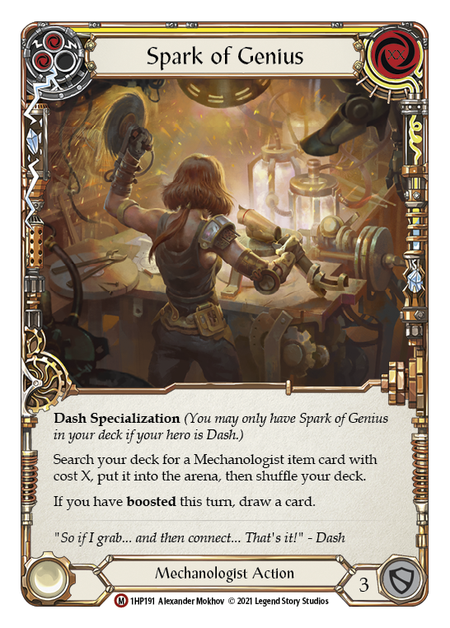
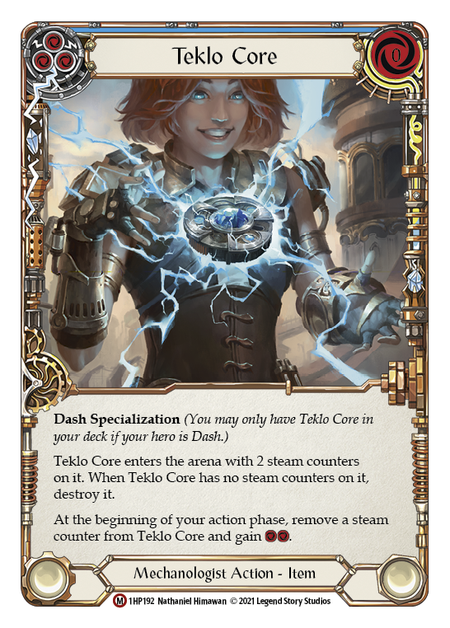
In my build, the core consists of all the yellow-pitch cards I play, as well as nearly all the blues. There are some red cards as well- mostly the really efficient Throttle, Zipper Hit, and Zero to Sixty- that fuel our aggro strategy but can still shine in either configuration. When our opponent has an off turn, pressuring with an efficient attack after shooting our pistol presents a good amount of damage.
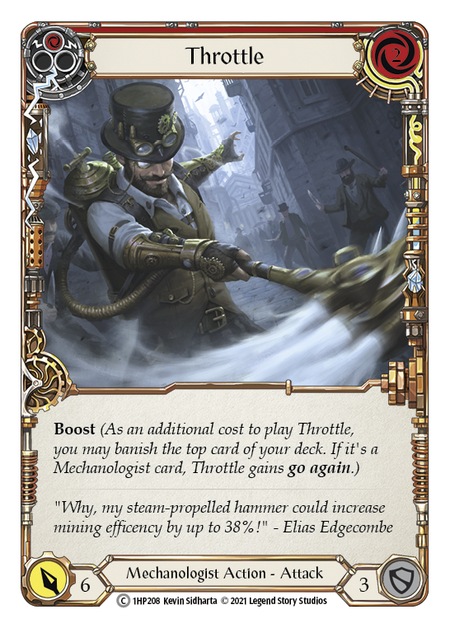
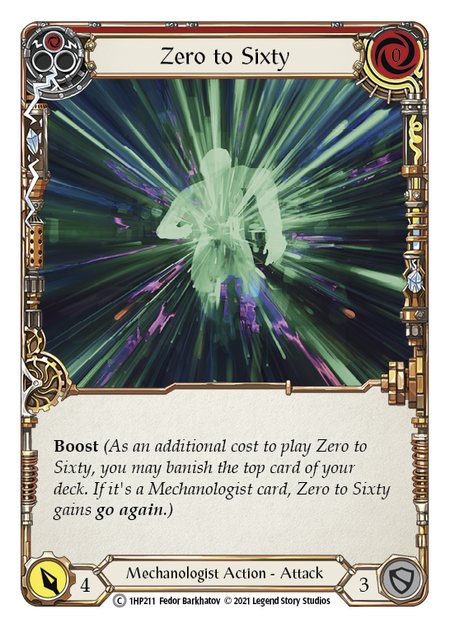
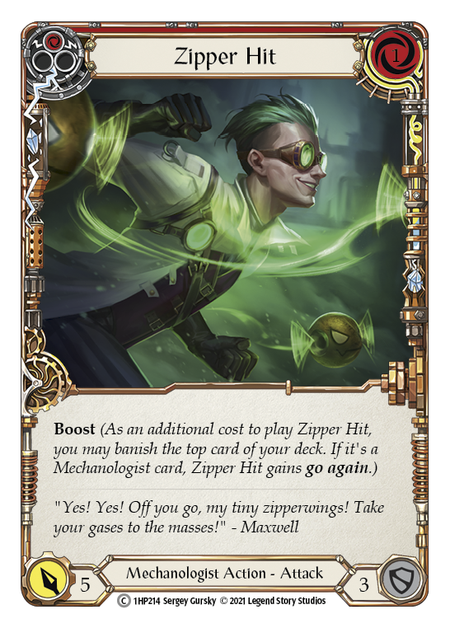
Most cards here boost- to keep boost synergies high for the aggro plan- and most block for 3. In my build, there are only 2 non-blocking cards in the core; and the entire core is Mechanologist, to ensure our boosts won’t fail in the aggro plan.
The Aggro Package
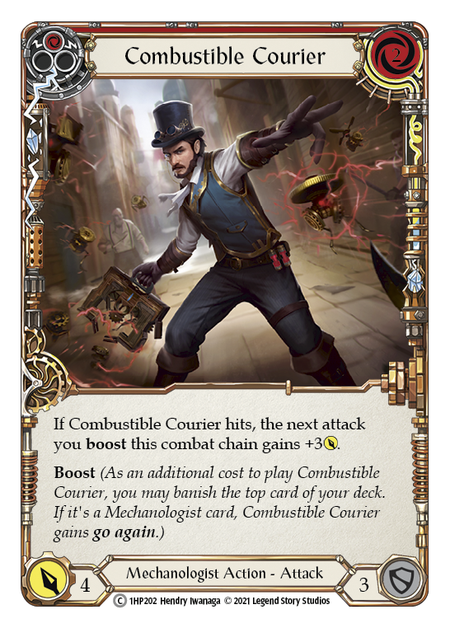

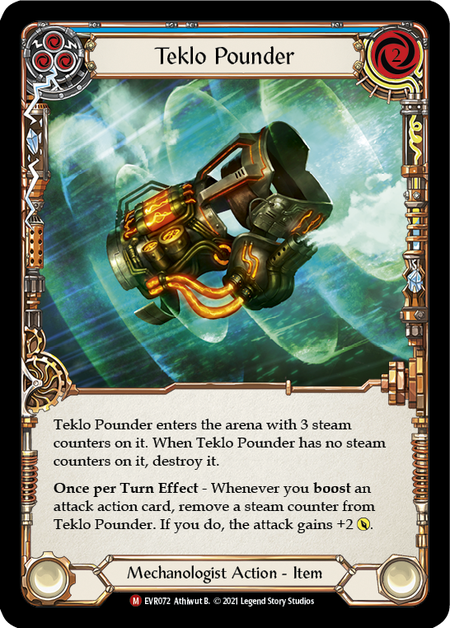
This consists of a lot of our strong red cards, such as Maximum Velocity and red Combustible Courier. Alongside those, we add in Teklo Pounder, which serves as our starting item when we're on the aggro gameplan.
With Pounder as our starting item, we essentially start with 6 damage for free; and combined with Combustible Courier, that damage could spiral into even more when unblocked- or a huge tempo swing when blocked, since we typically are able to present more boosted attacks even if that one gets fully blocked.
The Defensive Package
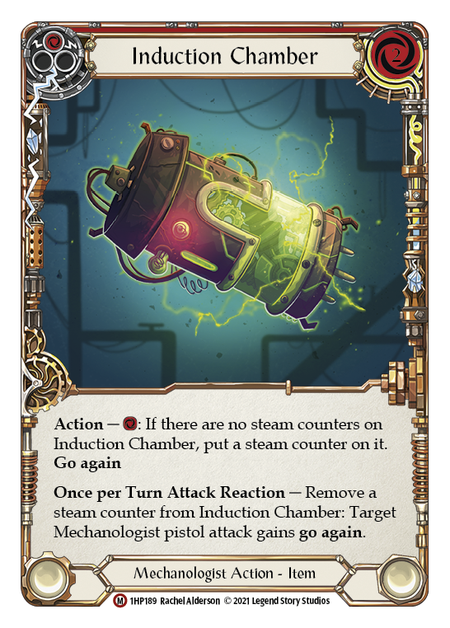
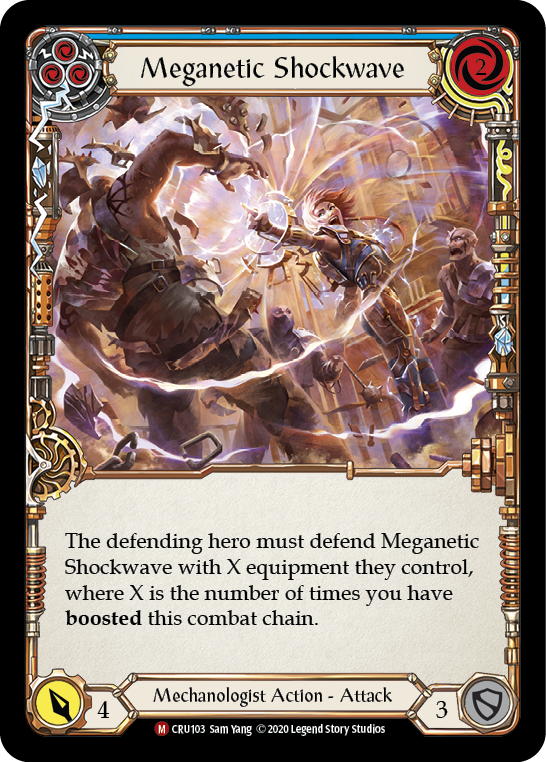
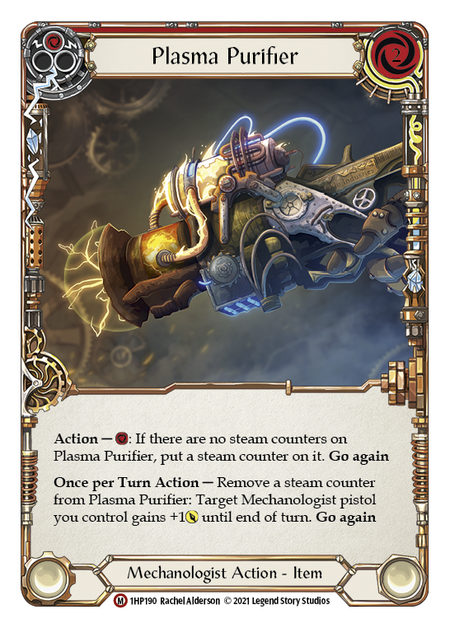
In all variations of the hybrid deck, this package consists of the pistol items- namely, Induction Chamber and Plasma Purifier- alongside our defense reactions. Cards like Unmovable, Fate Foreseen, and Sink Below all make appearances in variations of this deck.
I play some more blues in here as well, since i need a lot of pitch in the defensive plan to fetch my pistol-boosting items with Spark of Genius, and to reload them in the late game. Those extra blues aren’t in the core to facilitate a higher red count for the aggro configuration.
Personally, I like Meganetic Shockwave in that slot- and it's a card I consider for some aggo matchups too, when we maybe want to break equipment along the way (for example, against Lexi).
Equipment & Weapons
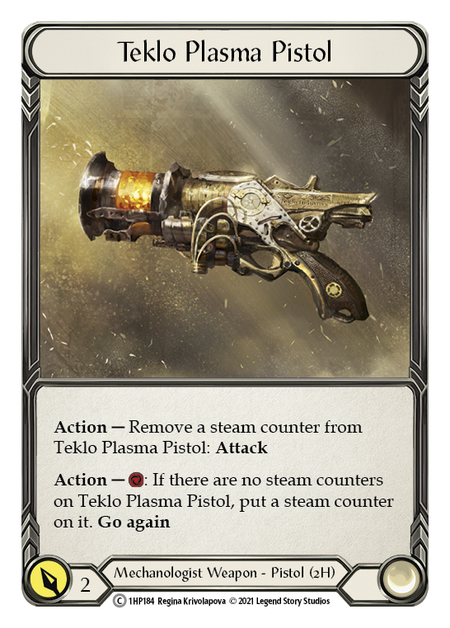
Unlike some Talishar fans out there (I don't want to lose pressure when my weapon breaks mid-game), I only play Teklo Plasma Pistol- which frees up more sideboard space as well, since the Pistol is mandatory for the defensive plan.
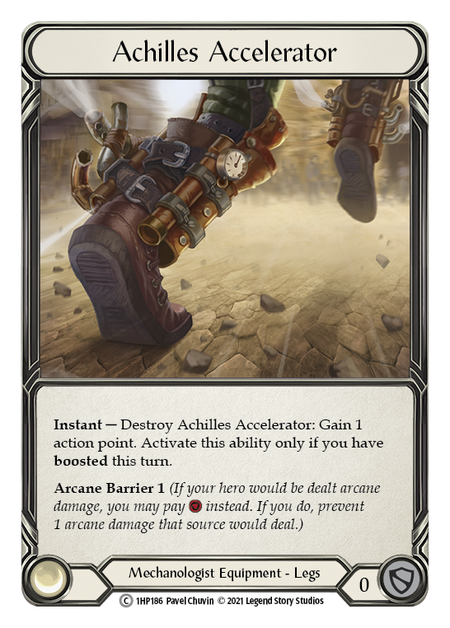
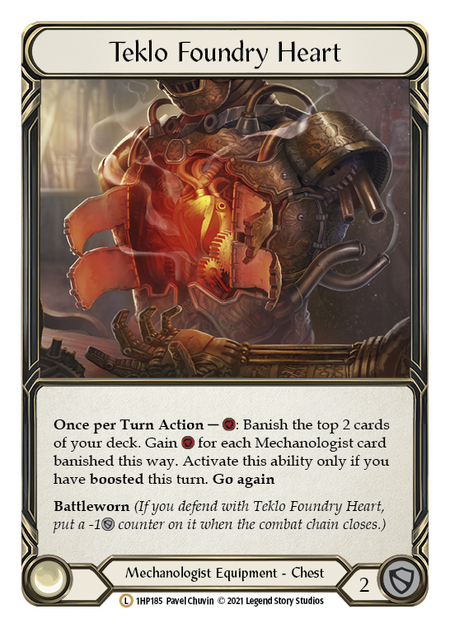
I always use Achilles Accelerator for my leg slot and Teklo Foundry Heart for my chest slot. Achilles Accelerator is very flexible by allowing us to get in another attack, continue our turn after playing a Spark of Genius or an item, and also supplies us with Arcane Barrier 1. Teklo Foundry Heart's most important attribute is its block value of 2 with battleworn, but sometimes the extra resource can be worth burning your deck for in the aggro plan.
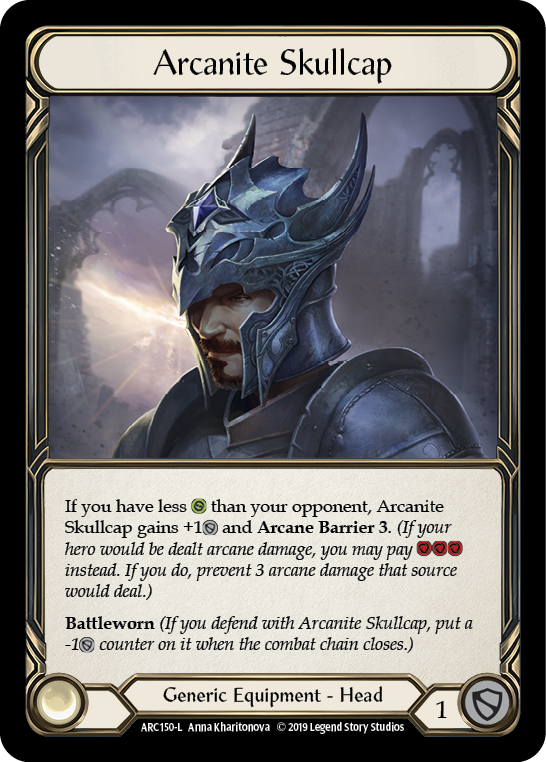
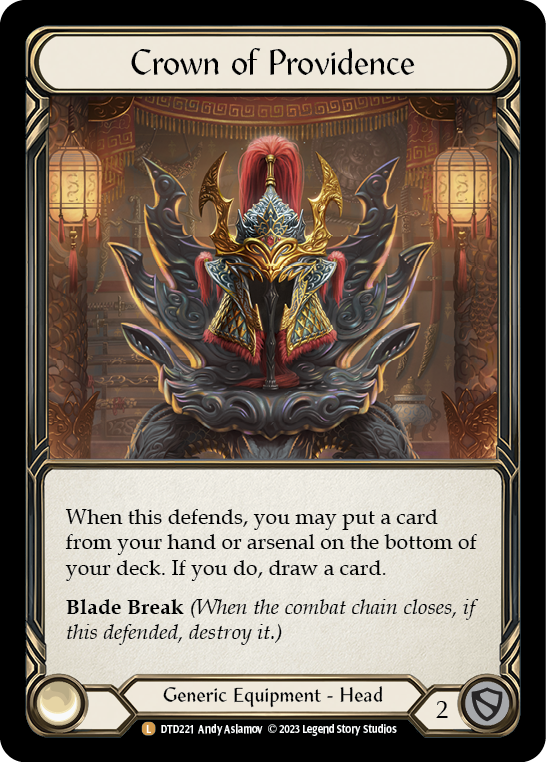
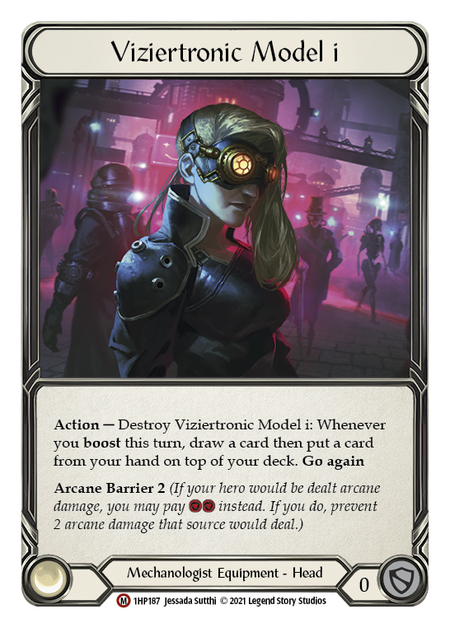
In the matchup against a Wizard, Viziertronic Model i is essential for its Arcane Barrier 2; but in any other matchup, we want a headpiece that blocks. For that, the contestants are Crown of Providence and Arcanite Skullcap.
Crown is stronger for the aggro plan, as it always blocks 2 and lets us fix an arsenal (to help us manage a Maximum Velocity turn, filter away a bad arsenal, or save a card from Command and Conquer). Arcanite Skullcap can potentially be more block, which would be preferable in the defensive plan, but that is conditional. Personally, I commit to Crown, and don't give another sideboard slot to Skullcap just for an option.

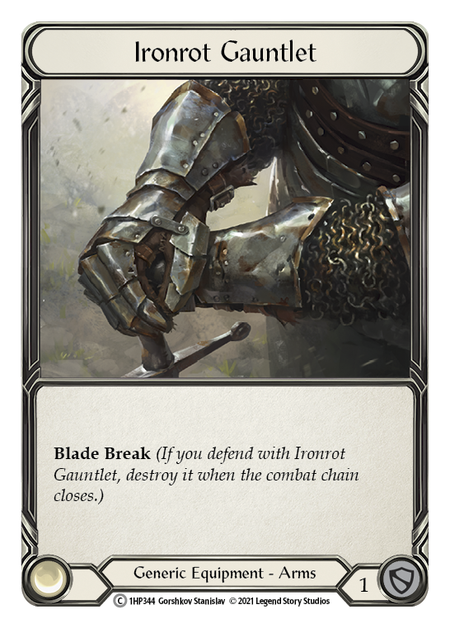
That only leaves us with the arms slot- in my case, Goliath Gauntlet for aggro and Ironrot Gauntlet for defensive.
Personalize Your Hybrid
Before I built my first version of this deck back in April, I thought to myself, "Yeah, boosting is fun, but what about defensive decks? I would love to play with pistol items into those.“ And then, greedy as I am, I tried to fit both plans into a single deck. The ratios were off and I made some bad choices compared to what my list looks like now, but for me it started the journey down the rabbit hole of trying to perfect my 'duck' list (shoutout to everyone who knows what I mean).
So here we are now, more than 4 months later. The Starvo meta is gone and Stubby Fai came and went, leaving their marks on this evolving list. Is it perfect? I don’t think so, but a decklist should be a living, evolving thing, and you should grow and evolve alongside it.
Even if the deck's nature forces some very tight margins in the sideboard, there's room to tinker with slots. Some people like Talishar for aggro; some despise Maximum Velocity; some want to include tech pieces like Signal Jammer, or more defense reactions. The deck has room to be tailored for your personal taste, and for the meta you're playing it in. Make it more aggressive, more defensive, more tech-y. Make it your own.
Dash boasts one of the most flexible hero powers in the game. How does the Inventor Extraordinaire respond to the developing Uprising meta?
by: Shahmir Samee
Dash has the capability to respond to any matchup, if you know how to.
by: Kiki Labad






